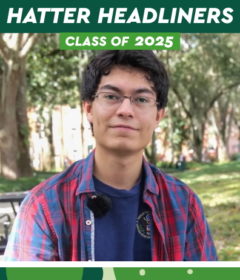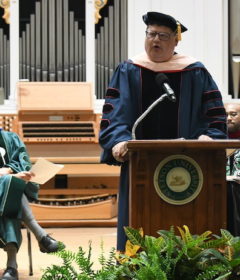Stephanie Hanson wins Udall Scholarship
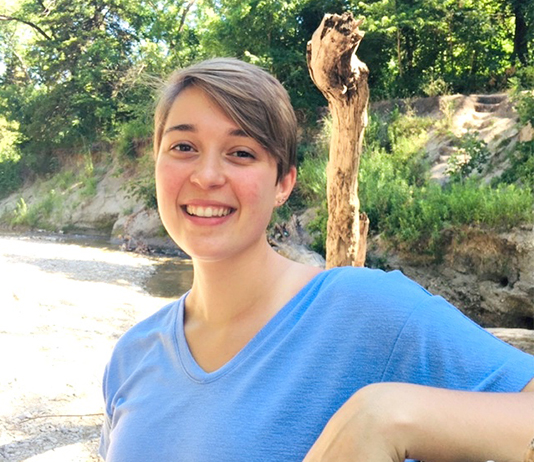
When Stephanie Hanson came to Stetson University, she had a vague notion about becoming a park ranger. Ever since she was very young, she had loved meandering through Spring Creek Forest Preserve just minutes from her home in Garland, Texas. Further away at Dinosaur Valley State Park, she had gawked at the dino tracks, millions of years old, preserved in the bed of the Paluxy River – “which is really cool, and it has some beautiful areas,” Hanson says.
Her love of the outdoors and passion for environmentalism are matched only by her love of the arts.
“I grew up outside, and I grew up doing all sorts of artsy things,” says Hanson, a senior majoring in environmental studies and minoring in biology and creative writing. “I still enjoy doing all those things.”
Since arriving at Stetson, Hanson’s notion of becoming a park ranger has morphed: She now longs to be what might be termed a park artist. “I think art would be an interesting and unique way to connect environmental research and the public,” she says.

Hanson’s pursuit of that goal has been enhanced by winning a prestigious Udall Undergraduate Scholarship. She was one of 55 sophomore and juniors to be selected as a 2020 Udall Scholars from among 429 candidates at 199 colleges and universities.
The Udall Foundation was established by Congress in 1992 to honor Morris “Mo” Udall, a U.S. representative from Arizona whose efforts supported the environment, public lands and natural resources, as well as the rights of American Indians and Alaska Natives. Congress later honored his brother Stewart Udall, who served as Secretary of the Interior from 1961 to 1969, by adding his name to the foundation.
The Udall Foundation awards scholarships, fellowships and internships for study in fields related to the environment and to American Indians and Alaska Natives. The scholarship includes attendance at a five-day conference in August, but student honorees will now meet online instead of in Tucson, Arizona, due to the pandemic. The scholarship also includes up to $7,000 for eligible academic expenses.
“I was definitely surprised and very thankful to get the Udall scholarship,” Hanson said by phone from her home in Garland, just northeast of Dallas. “I think it was maybe unique that I’m working at this intersection of the arts and environmental issues.”
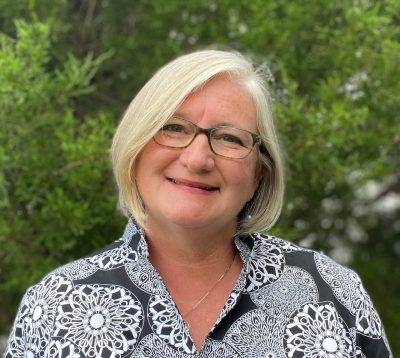
Photo by Clara Wait
Wendy Anderson, PhD, professor and Chair of Environmental Science and Studies at Stetson, sees a need that Hanson’s dual passions will fulfill.
“Scientists are often not the best communicators,” Anderson says. “We rely heavily on people who are good communicators to translate important environmental messages to wider audiences.”
The Udall scholarship “is a big deal, and Stephanie totally deserves and earned it,” says Anderson, who is Stetson’s faculty representative for the Udall Foundation.
Anderson came by her admiration of Hanson firsthand when she taught the class “Cultivating Sustainability Through the Arts.” Hanson was more than just a student in that class, which initially was going to be an independent study for her. Instead, Anderson unabashedly says, Hanson was “the instigator of that class, and I would say she was a kind of intellectual co-lead with me.”
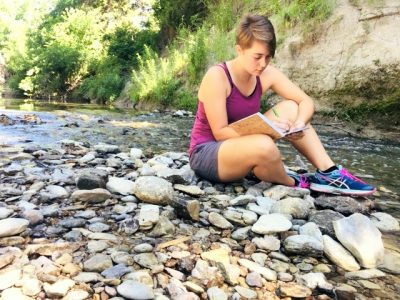
Hanson’s artsy side includes drawing, watercolor painting and three-dimensional art, but “creative writing has always been what I’ve come back to,” she says.
Her love of creativity and the outdoors “ran parallel to each other but never really intersected until I came to college,” she says. “I had wanted to do research and maybe become a park ranger, something like that, but I really wanted to use my creativity and delve into the art world to create awareness for environmental issues and create conversations about those issues. I thought art would be an interesting and unique way to do that.”
Art is “innately emotional” whether one is creating or engaging it, Hanson says, “And I think emotions are key to getting people involved in these environmental issues. It’s something that facts and statistics don’t necessarily offer all the time. Art also is a conversation starter. A lot of people can find connections to art in some way, and I think it’s an interesting way of starting conversation about environmental issues.”
Hanson isn’t hesitant to get dirt under her fingernails.
As president of the Stetson Environmental Club, she and fellow members have cleaned up the beaches of Daytona Beach, and worked at DeLeon Springs State Park rooting out invasive plant species, maintaining trails and helping out the park rangers there. This coming academic year she will serve as co-president of the club with Victoria Crawford.
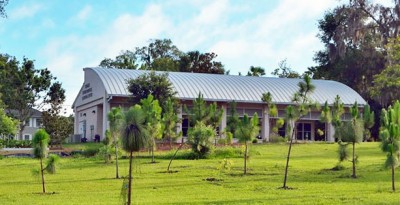
Hanson also is an intern with the Volusia Sandhill Ecosystem, a project of the university’s Gillespie Museum, which focuses on earth science and natural history. As a “teaching landscape,” the project seeks to restore the longleaf sandhill ecosystem that once existed on a one-acre, dry, sandy slope of the DeLand Ridge, located behind the Rinker Environmental Learning Center and part of the Gillespie Museum grounds.
Hanson already has begun integrating the arts and eco awareness. The environmental club has hosted events centered around making macramé plant holders and “upcycling” bottles into pots, and creating coasters out of microplastics cleaned away from beaches.
“We were trying to create conversation, so if someone has their coasters sitting around someone else may say, ‘What’s that?’ ” Hanson says. “So, it’s a conversation starter to get people talking about microplastics, that kind of thing.”
This summer Hanson launched Collections from the Field, an art project focused on her beloved Spring Creek Forest Preserve.
“My view of the project is that people will be inspired by the preserve and create any kind of art, whether it be creative writing, land art, painting, watercolor or photography,” she says, noting she has had many supporters and helpers with the launch. Participants will submit their art to the project “and it will show up in an online gallery-type space (at collectionsfromthefield.com). There’s also social media engagement involved where people can submit through social media.”
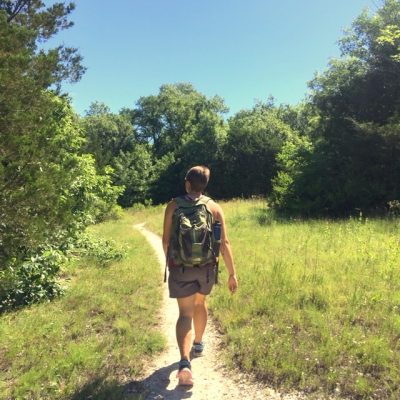
Photo by Jennifer Hanson
The goal is to “help people get connected to the land, interact with nature in a different way, contribute and share their ideas, and build community through creativity,” Hanson says.
Anderson says Hanson is “this phenomenal leader. She’s creative and super motivated. She’s got perseverance, she shows up, she gets stuff done, she follows through, she inspires others — but she is super low-key. I find her to be one of these enigmas where she’s so powerful and effective but without bringing a whole lot of attention back onto herself.”
Hanson is planning to graduate in Spring 2021 but, she says. “I don’t really know where life is going to take me after college. I’m still trying to figure that part out. Definitely something with environmentalism involved with creative writing.”
As for the current state of the environment, Hanson says, “Definitely red flags are going up everywhere. I am not sure what our lives are going to look like by the time I’m 50, but I’m definitely alarmed about what’s coming. I have hope we will turn in the right direction at some point. That’s why I’m leaning toward art as a way of communicating, because art seems to be more universal and has the ability to connect people more than just facts and statistics and research papers. I have hope that we will be able to find ways that we can coexist with the land and with the earth.”
— Rick de Yampert


